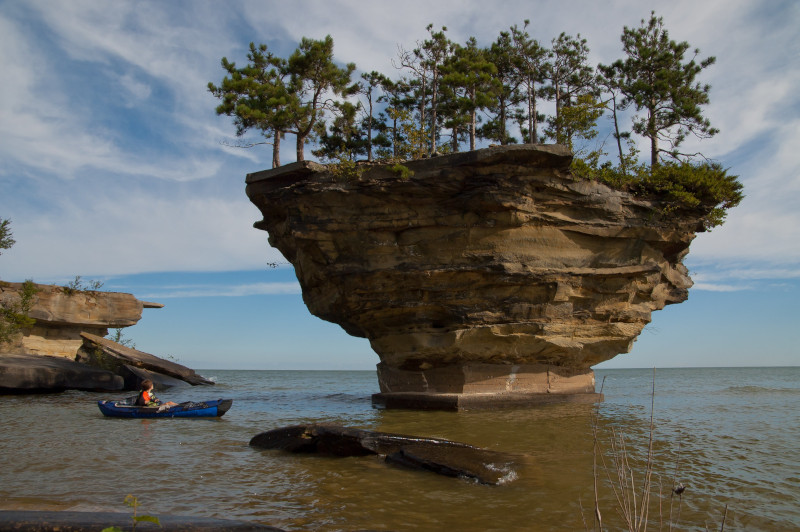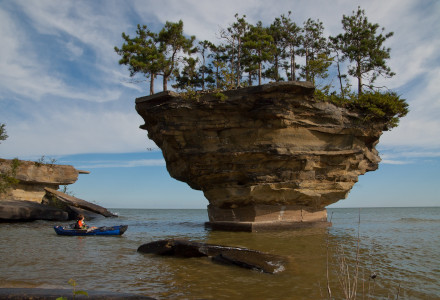
Photographer: Derek A Young
CC License: https://bit.ly/3wA6N73
Can you imagine paddling your canoe around a bend, and seeing the incredible Turnip Rock before you? It looks almost unreal, doesn’t it? This remarkable sight represents a small geological formation in the state of Michigan.
This small but beautiful location constitutes a type of formation known as a stack. The unique site sits only a short distance from the shores of Lake Huron, in Michigan, United States.
During certain times of the year when the water depth decreases, Turnip Rock also becomes a diminutive tidal island. Its unique shape makes it a moderately popular destination for recreational boaters and kayakers.
However, this distinctive formation remains privately owned land. Fortunately, the owners care enough to forbid access, in order to preserve it. Good for them. To protect Turnip Rock, they constructed a small concrete barrier around the perimeter of its base.
Photographer: David Marvin
CC License: https://bit.ly/3jWs8ow
Turnip Rock Geological Formation and Ecology
Turnip Rock is part of a very small peninsula. The primarily stone formation has gradually been eroded into its current shape by the undercutting effects of almost constant wave action.
The exact timeframe for this process cannot be precisely determined, but it has been estimated to have taken at least several thousand years. Nature is the most patient of all sculptors.
Despite the primarily stone composition of Turnip Rock, there is a small collection of trees present on its top, some of which are as much as 20 ft (6.1 m) in height. Talk about the tenacity of life.
Despite its tiny size, and the fact that only these few trees and some grass are its only flora, Turnip Rock actually supports a small population of animal life. A few squirrels and birds inhabit the trees.
Related Articles: Moeraki Boulders, Giants Causeway, Fingal’s Cave

